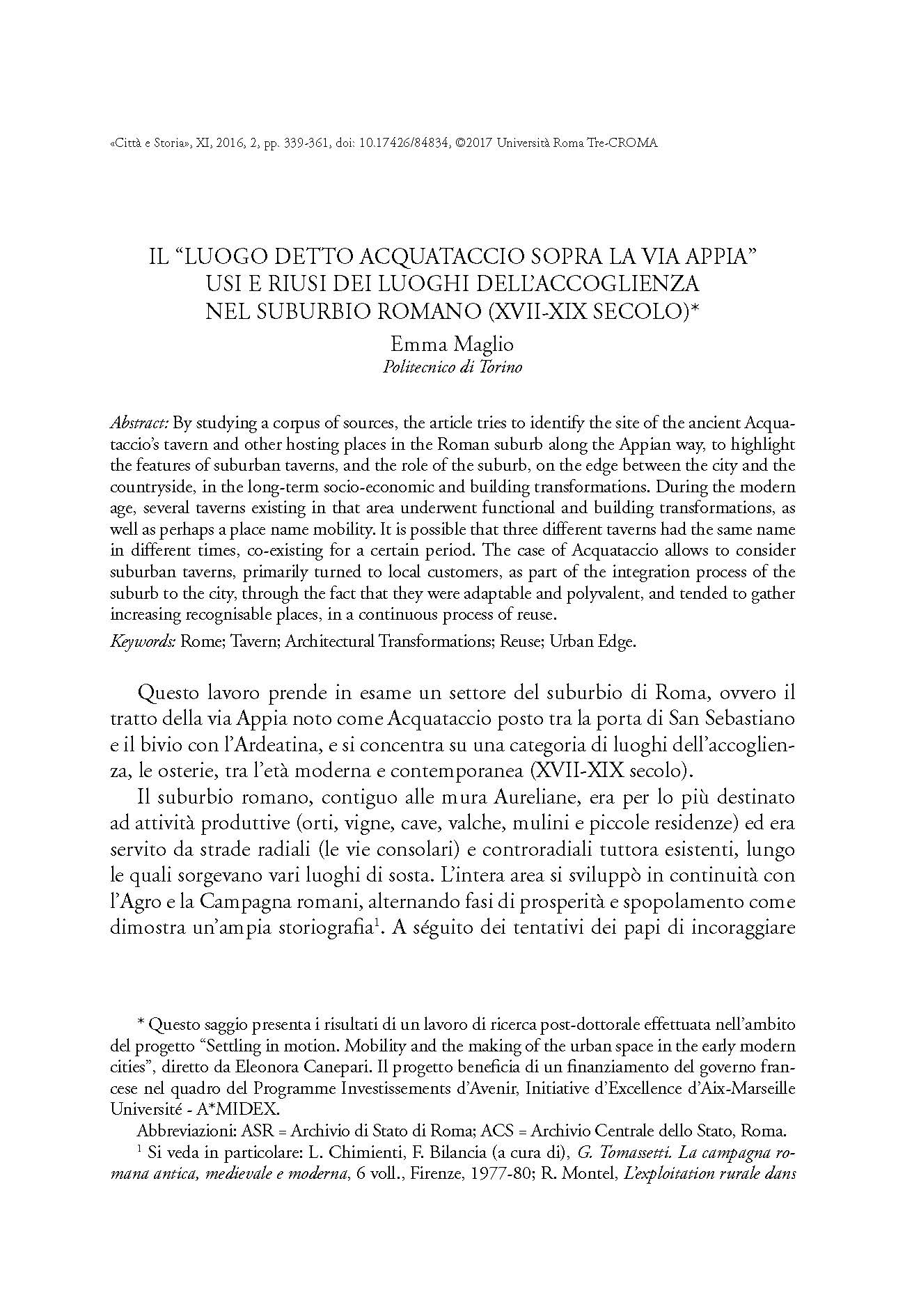Il “luogo detto Acquataccio sopra la Via Appia”. Usi e riusi dei luoghi dell’accoglienza nel suburbio romano (XVII-XIX secolo)
6,00 €
By studying a corpus of sources, the article tries to identify the site of the ancient Acquataccio’s
tavern and other hosting places in the Roman suburb along the Appian way, to highlight
the features of suburban taverns, and the role of the suburb, on the edge between the city and the
countryside, in the long-term socio-economic and building transformations. During the modern
age, several taverns existing in that area underwent functional and building transformations, as
well as perhaps a place name mobility. It is possible that three different taverns had the same name
in different times, co-existing for a certain period. The case of Acquataccio allows to consider
suburban taverns, primarily turned to local customers, as part of the integration process of the
suburb to the city, through the fact that they were adaptable and polyvalent, and tended to gather
increasing recognisable places, in a continuous process of reuse.
By studying a corpus of sources, the article tries to identify the site of the ancient Acquataccio’s
tavern and other hosting places in the Roman suburb along the Appian way, to highlight
the features of suburban taverns, and the role of the suburb, on the edge between the city and the
countryside, in the long-term socio-economic and building transformations. During the modern
age, several taverns existing in that area underwent functional and building transformations, as
well as perhaps a place name mobility. It is possible that three different taverns had the same name
in different times, co-existing for a certain period. The case of Acquataccio allows to consider
suburban taverns, primarily turned to local customers, as part of the integration process of the
suburb to the city, through the fact that they were adaptable and polyvalent, and tended to gather
increasing recognisable places, in a continuous process of reuse.

